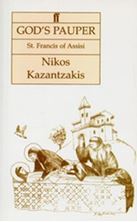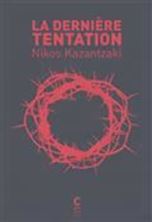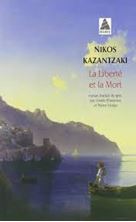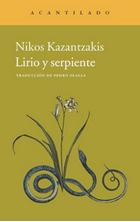Nikos Kazantzakis
Alexander The Great: A Novel
At Palaces Of Knossos
God's Pauper. St Francis of Assisi
La dernière tentation
Nikos Kazantzaki
La dernière tentation
Paru en 1954, La Dernière Tentation a immédiatement suscité la controverse. Au fil de trente-trois chapitres, Nikos Kazantzaki revisite en effet les derniers moments de la vie du Christ, ses rencontres marquantes - notamment avec Jean-Baptiste et Marie-Madeleine - le cheminement chaotique qui l'a conduit jusqu'à l'accomplissement de son destin historique. Il imagine les questionnements, les hésitations de celui qui croyait n'être qu'un homme ordinaire. Comme dans Le Christ recrucifié, il interroge ainsi le tiraillement éprouvé par Jésus entre sa part humaine et sa part divine.
En résulte un texte plein d'humanité, pourtant rejeté par l'Église orthodoxe grecque qui l'a jugé blasphématoire et a menacé l'auteur d'excommunication - tandis que le Vatican le mettait à l'index.
« Il faut particulièrement admirer l'art avec lequel Kazantzaki évoque par allusions l'histoire de la Passion. Elles donnent à tout ce qu'il écrit l'arrière-fond mythique qui est l'élément essentiel d'une forme épique. »
Thomas Mann
La liberté et la mort
A travers eux, il poursuit les réflexions sur la liberté entamées dans son célèbre Alexis Zorba, avec le même souffle et la même profondeur.
Les frères ennemis
Lirio y serpiente
The Fratricides
Three Plays: Melissa, Kouros, Christopher Columbus
Zorba the Greek
This moving fable sees a young Greek writer set out to Crete to claim a small inheritance. But when he arrives, he meets Alexis Zorba, a middle-aged Greek man with a zest for life. Zorba has had a family and many lovers, has fought in the Balkan wars, has lived and loved - he is a simple but deep man who lives every moment fully and without shame.
As their friendship develops, he is gradually won over, transformed and inspired along with the reader. Zorba the Greek, Nikos Kazantzakis' most popular and enduring novel, has its origins in the author's own experiences in the Peleponnesus in the 1920s. His swashbuckling hero has legions of fans across the world and his adventures are as exhilarating now as they were on first publication in the 1950s.
'There can never be any doubt that Kazantzakis was the possessor of genius.' Sunday Telegraph












